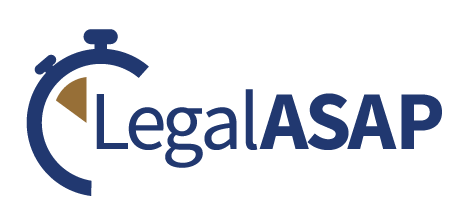North Dakota is known as the home of the Badlands, a harsh environment with loose rock and canyons for miles. If you’re traveling on any of the state’s 86,000+ miles of public roads, you’ll need an accident plan. North Dakota car accident laws may be hard to understand, but you should know your rights if you qualify for a legal claim.
Fortunately, we’ve put together this complete guide to help you know what to do in case of collision. It covers how to report an accident, laws that determine fault, and when you need an auto accident attorney.
Keep reading to learn the rules of the road in North Dakota so you can get where you’re going safely. For specific assistance to your accident, you’ll need a lawyer by your side.
Free Auto Accident Evaluation
Hurt in a wreck that wasn’t your fault? Click here to speak with a nearby attorney for FREE about your Auto Accident claim.
or call (888)-927-3080
What to Do at the Scene of the Crash
The first thing to do if you’re in an automobile accident in North Dakota is to stop at the scene. That may seem like a given, but in the heat of the moment many people panic and flee.
Not only is that a bad idea, it’s also illegal in North Dakota and will be classified as a hit-and-run. In North Dakota, that carries serious consequences including up to 10 years in jail or $1,500-$20,000 of fines.
Next, check for injuries and make sure you or any passengers are out-of-the-way of additional harm. If your vehicle is obstructing traffic, it’s okay to move it to the side of the road. Safety is paramount, and you don’t want to cause secondary accidents.
N.D. Cent. Code §39-08-06 also requires drivers in a crash to voluntarily give the following information:
- Driver’s name and address
- Name of the motor vehicle insurance policy carrier of the driver and owner
- Registration number of the vehicle
- Driver’s license number (upon request)
Call 911 if anyone appears hurt. North Dakota car accident laws state that drivers have a duty to render aid to anyone injured in a crash. This includes going as far as transporting the person to a physician, surgeon, or hospital for medical treatment. The best move, however, is to wait for emergency personnel at the scene if possible.
How to Report a Car Accident in North Dakota
Once you address the initial safety concerns, you should call the police.
North Dakota car accident laws (N.D. Cent. Code §39-08-09) require that drivers report a vehicular collision to the police when:
- There are any bodily injuries or fatalities
- There is at least $4,000 of property damage
Regardless of if the damage seems minor, it’s still a good idea to call the police. That’s because it can be difficult to accurately assess what $4,000 worth of damages looks like on-sight.
And sometimes whiplash and other car accident injuries show up after the fact. As such, you may need a police report later to help strengthen your case.
Also snap photos of vehicle damage, injuries, your surroundings, and anything else you feel may be pertinent to the crash. If there are witnesses, ask for their contact information as well for your legal claim.
Finally, never say anything incriminating or apologize after an accident, even if you think it’s your fault! It may reduce your settlement if blame for the collision falls on you.
North Dakota is a No-Fault State
North Dakota is one of about a dozen states that has a no-fault insurance system in place.
This means after a crash, North Dakota drivers must first claim with their own insurance for compensation. This includes using Personal Injury Protection (PIP) to cover medical bills and income losses from collision-related injuries. And yes, this holds true even if you’re not responsible for the accident — thus the term “no-fault”.
However, sometimes the costs of your losses exceed an individual’s policy limits, and that’s where exceptions come into play.
Exceptions to the No-Fault Rule
In order to circumvent the no-fault car insurance system, claims must satisfy certain thresholds.
Per North Dakota car accident laws, if you meet one or both of the following, you can sue the other driver to recover damages:
- You suffer a serious injury, permanent disability, or disfigurement that lasts more than 60 days
- Your medical bills exceed $2,500
However, this no-fault rule has no impact on property damage claims in North Dakota. There are no insurance restrictions for holding an at-fault driver liable for damages to or total loss of a vehicle.
Keep in mind that insurance companies will always try to pay the least amount of money possible to claimants. It may be crucial to retain a skilled car accident attorney in states with no-fault policies.
A lawyer experienced in North Dakota car accident law will help you get a better settlement. From your insurance and in any civil lawsuits.
North Dakota Car Insurance Laws
As part of its no-fault system, North Dakota requires anyone registering a vehicle to carry certain minimum insurance requirements.
Driving without liability insurance is a class-B misdemeanor in North Dakota, punishable at minimum by fines and license suspension.
As mentioned above, the insurance requirements include Personal Injury Protection (PIP). That’s so drivers can cover their own medical expenses after a collision. The minimum PIP requirement to drive in North Dakota is $30,000.
According to the North Dakota Insurance Department, the other liability insurance minimums a driver must have include:
- Bodily injury liability. $25,000 per person/$50,000 per accident. Bodily injury liability covers the other party’s injuries caused by your actions.
- Property damage liability. $25,000 per accident. Property damage liability covers claims against you for damage to someone else’s property resulting from your actions. It also covers damage to short-term rental vehicles.
- Uninsured motorist (UM) and Underinsured motorist (UIM) coverage. Both UM and UIM categories must have a minimum coverage amount of $25,000 per person/$50,000 per accident.
UM policies cover bodily injury claims you would have against another driver who carries no insurance. UIM policies provide coverage if a driver’s policy is not high enough to cover your damages. This coverage does not pay for physical damage to your vehicle.
Many drivers elect to take out policies with higher limits in response to rising accident costs. Depending on your financial situation, it’s a good idea to opt for as much insurance as you can afford. That’s because coverage only goes up to the limits on your policy.
Once claims reach those upper thresholds, you’re responsible for any outstanding bills. Securing a policy with higher insurance limits can help protect your personal assets in the event of a serious crash.
Additional Insurance Coverage Options
Aside from PIP insurance, North Dakota’s insurance minimums only cover the other cars and passengers in an accident. As such, many drivers frequently purchase additional insurance to cover their own damages:
- Collision insurance. This pays for all your vehicle’s damage resulting from an accident, regardless of who is at-fault.
- Comprehensive insurance. This type of insurance covers vehicle damage from phenomena separate from vehicle collisions, like fires and floods. For instance, if you hit an animal while driving, comprehensive insurance will cover your car’s repair fees.
- Towing. Provides coverage to reimburse for towing expenses in an emergency.
Comparative Negligence Laws in North Dakota
In addition to North Dakota’s no-fault car accident laws, the state also follows a modified comparative negligence system.
In North Dakota civil cases, it’s possible for both drivers to share a portion of liability. However, anyone claiming damages in North Dakota must be less than 50% at-fault for the car accident. And less at-fault than the other driver(s).
If a judge or jury finds a driver more than 50% responsible for a collision, they can’t receive any compensation. The other driver(s) will have the amount of compensatory damages they may receive go down by their percentage of fault.
To further illustrate how comparative negligence works in North Dakota car accident laws, consider the following example. If one driver was 51% responsible for an accident with $100,000 in damages, they get nothing.
However, if the other driver was 49% responsible with $100,000 in damages, they may receive $51,000. Their percentage of responsibility minimizes what they may claim by that amount.
To make things even more confusing, however, there are certain exceptions to this rule only for property damage claims. The amount of damages will not decrease in proportion to the amount of fault in the following situations:
- There is more than one person at-fault for a property damage accident.
- Direct physical property damages are $5,000 or less and indirect physical property damages are $1,000 or less.
- The defendant is more than 50% at-fault.
Types of Damages in North Dakota Car Accidents
If you pursue a North Dakota lawsuit against another driver, there are two types of damages you may qualify for. Both offer compensation for losses resulting from an accident, with no damage caps for car accident claims.
The main forms of damages in personal injury claims are economic and non-economic.
Economic Damages
These are the more tangible, money damages a victim may seek from an accident. They’re usually monetary or otherwise somehow quantifiable.
Examples of economic damages include:
- Medical bills above what PIP covers
- Lost work or wages (not covered by PIP)
- Car repairs and maintenance costs
- Damaged property
- Physical therapy or the purchase of assistive devices (like wheelchairs)
Non-Economic Damages
Somewhat harder to prove but just as real when it comes to the experience of loss are non-economic damages. These are the repercussions of an accident that a victim experiences that aren’t as measurable, but still take a toll on one’s regular life.
Common examples of non-economic damages include:
- Pain and suffering
- PTSD or anxiety
- Loss of enjoyment of life
- Emotional distress
North Dakota Statute of Limitations for Car Accidents
Every state has a time limit for filing civil lawsuits resulting from a car accident. If you miss that deadline, the court will most likely toss your case.
Keep in mind this is entirely separate from the timing for filing an insurance claim, which is generally more immediate.
Interestingly, North Dakota has a particularly long statute of limitations for personal injury cases, which covers property damage and injuries. Per N.D. Cent. Code §28-01-16, an individual must file within six years from the accident date.
In wrongful death cases, the deadline cuts to two years from the victim’s passing date (N.D. Cent. Code §28-01-18).
Unless some rare exception applies to grant an extension, you don’t want to miss these deadlines. Also, even with such a long statute of limitations, remember that details will be fresher the sooner you file. And the more support your case includes, the better the settlement your lawyer will be able to secure for you.
LegalASAP Will Connect You With an Expert Auto Accident Lawyer
With over 10,000+ car accidents in North Dakota annually, there’s a good chance you might someday be in a collision. However, now that you have an idea of North Dakota’s car accident laws, you’ll know what to do.
Nonetheless, with every car accident there are multiple variables. And North Dakota’s modified comparative negligence laws can make it more challenging to get the compensation you deserve.
Rather than risk receiving an inadequate settlement, let us connect you with an auto accident attorney in our network.
It won’t cost you anything out-of-pocket since the consultation is free and most lawyers work on contingency. We’re standing by and ready to help drive your claim forward today.
Kimberly Dawn Neumann
Kimberly Dawn Neumann is a multi-published NYC-based magazine and book writer whose work has appeared in a wide variety of publications ranging from Forbes to Cosmopolitan. She graduated summa cum laude from the University of Maryland, College of Journalism. For more, visit: www.KDNeumann.com or Instagram @dancerscribe.


